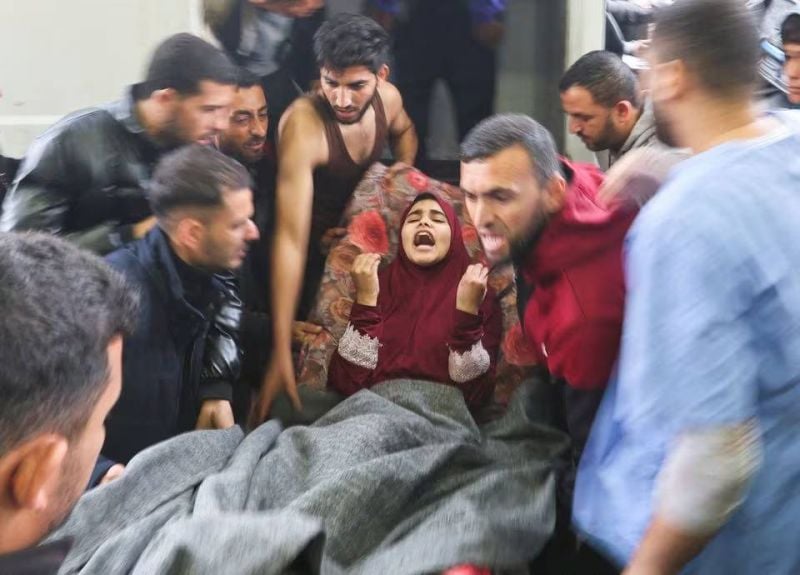
A wounded Palestinian is brought into Nasser hospital, following Israeli strikes on Ma'an school east of Khan Younis, in the southern Gaza Strip, Dec. 5, 2023. (Credit: Ibraheem Abu Mustafa/Reuters)
For almost two months now, many have listened to and read news from journalists stationed in Khan Yunis, in southern Gaza. From al-Jazeera to Reuters to Instagram, on-the-ground reports were dispatched from this area, designated as “safe” by the Israeli military as it sought to push the Gazan population out of the north and carry out operations against what it claimed were Hamas strongholds there.
Some of these strongholds, according to the Israeli army, were in highly populated and vulnerable places, such as al-Shifa Hospital and Jabalia refugee camp.
Hamas far from 'eliminated'
A report from The Washington Post Tuesday cited three Israeli security officials revealing, on condition of anonymity, that since the war started, the Israeli army had killed 5,000 Hamas fighters out of an estimated 30,000-strong brigade. Still a far cry from achieving their stated goal of “eliminating Hamas," which Osama Hamdan, a senior member of Hamas in Lebanon, called "impossible," during a press conference in Beirut.
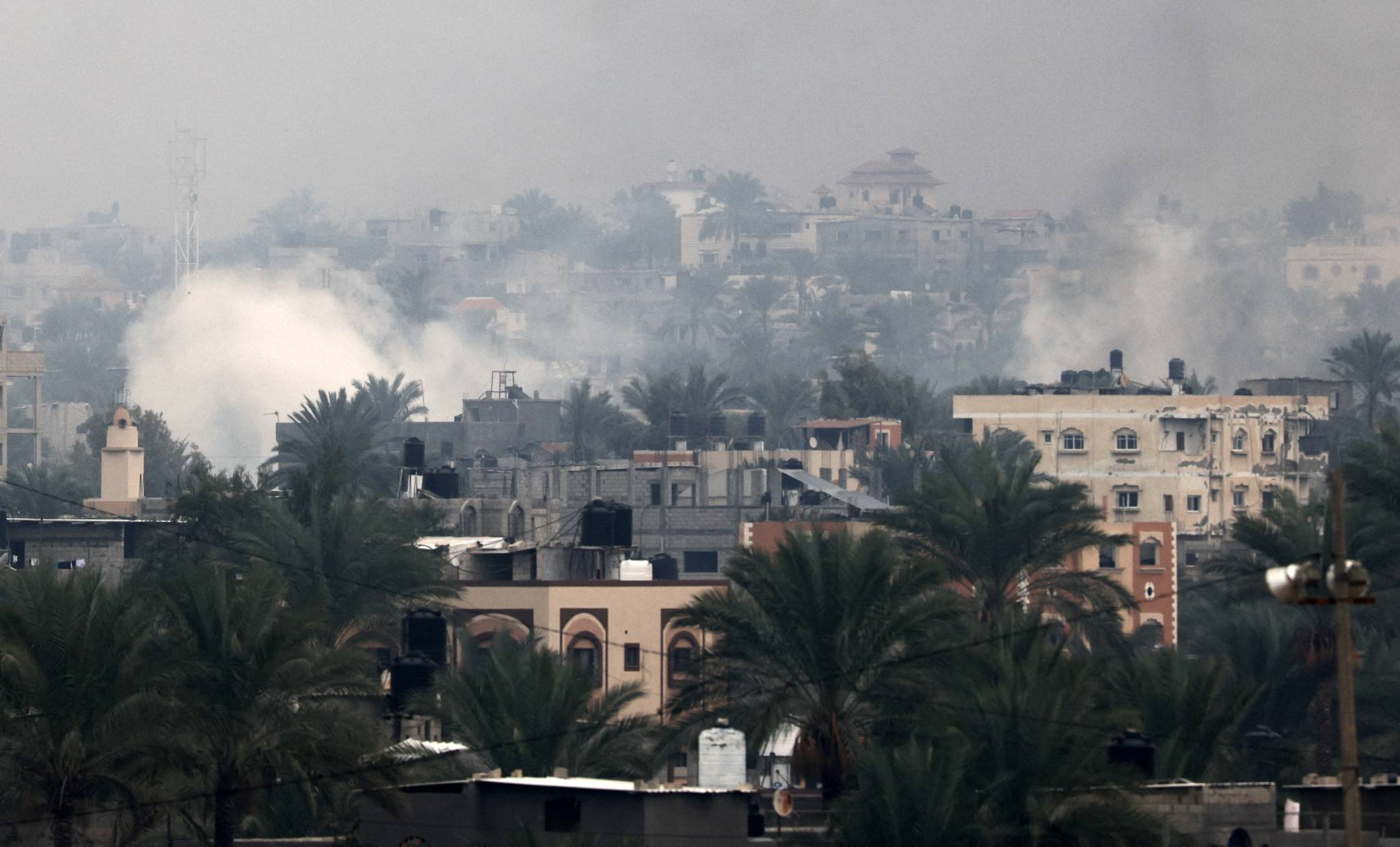 Smoke rises above buildings in Khan Yunis in the southern Gaza Strip, as battles between Israel and Hamas militants continue on Dec. 5, 2023. (Credit: Mahmud Hams/AFP)
Smoke rises above buildings in Khan Yunis in the southern Gaza Strip, as battles between Israel and Hamas militants continue on Dec. 5, 2023. (Credit: Mahmud Hams/AFP)
‘In the heart of Khan Yunis’
Now the Israeli army has moved its ground operation south into Khan Yunis, where the voices of journalists are already hindered by telecommunication blackouts. Several of the journalists who remain in the Strip have had family killed and their homes destroyed by Israeli attacks.
Over the weekend, leaflets dropped on neighborhoods in Khan Yunis — the largest city in southern Gaza and the second largest in the entire Strip — warned a “terrible attack is imminent.”
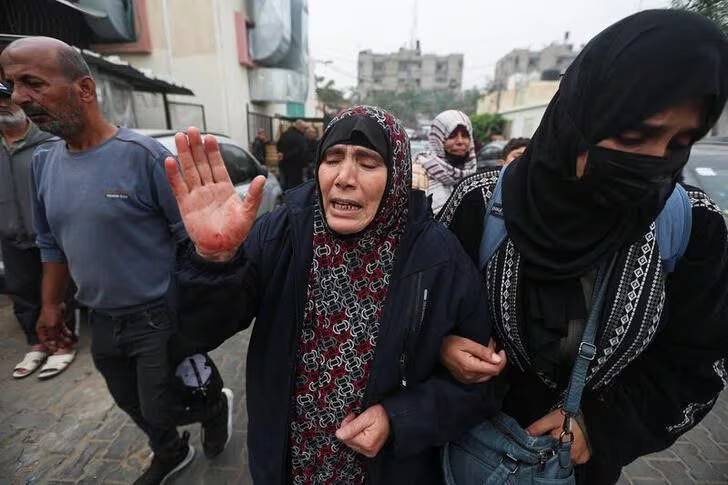 A Palestinian woman reacts, as the bodies of Palestinians who were killed during Israeli strikes on Ma'an school east of Khan Younis are laid out at Nasser hospital, amid the ongoing conflict between Israel and Hamas, in Khan Younis in the southern Gaza Strip, Dec. 5, 2023. (Credit: Ibraheem Abu Mustafa/Reuters)
A Palestinian woman reacts, as the bodies of Palestinians who were killed during Israeli strikes on Ma'an school east of Khan Younis are laid out at Nasser hospital, amid the ongoing conflict between Israel and Hamas, in Khan Younis in the southern Gaza Strip, Dec. 5, 2023. (Credit: Ibraheem Abu Mustafa/Reuters)
The Israeli military’s demands for “immediate evacuation” threatened 117,000 people living or sheltering in an area that represents 20 percent of Khan Yunis, according to OCHA.
A senior army commander called Tuesday “the most intense day since the beginning of the ground operation," with Israeli forces “in the heart of Khan Yunis.”
No safe place for the displaced
UNRWA’s Dec. 4 report states there are almost one million displaced people in the Middle, Khan Yunis, and Rafah districts, joining residents of these already densely populated areas, thousands of whom are sheltering in schools and hospitals, locations thought to be less likely targeted by Israel’s airstrikes.
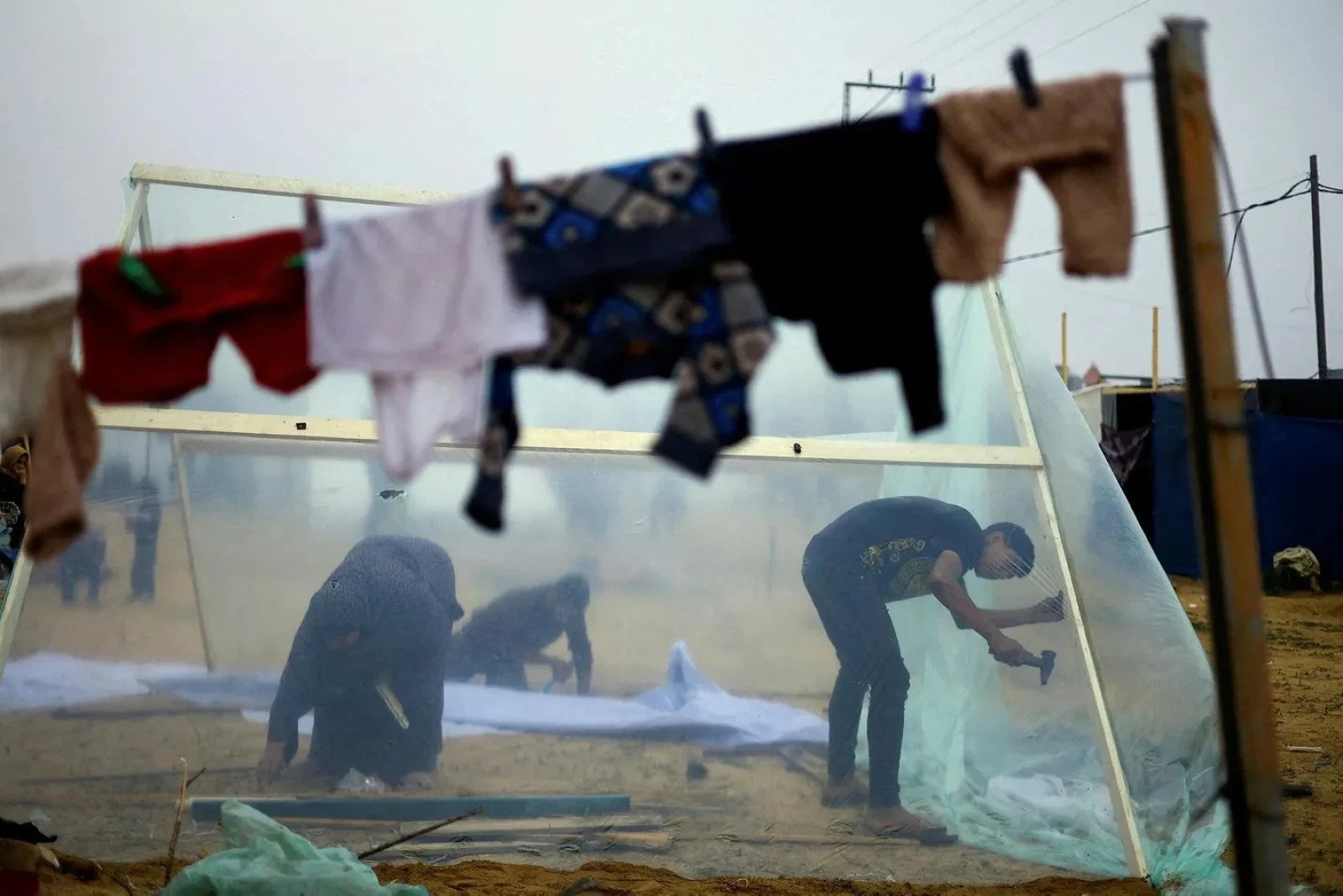 Palestinians build a makeshift shelter in a new camp for those who are internally displaced having fled Israeli ground and air attacks, in Rafah, Dec. 5, 2023. (Credit: Mohammed Salem/Reuters)
Palestinians build a makeshift shelter in a new camp for those who are internally displaced having fled Israeli ground and air attacks, in Rafah, Dec. 5, 2023. (Credit: Mohammed Salem/Reuters)
Late in the afternoon Tuesday, Ma’an school in Khan Yunis was hit by an Israeli bomb that killed at least 25 people, according to initial reports. Images from Nasser Hospital, which received dozens of injured from the attack, show a hospital floor streaked with blood and filled with people lying on blankets, many of them children. Some had died there on the floor, others were still being tended to by nurses and doctors. Scattered among the carpet of wounded were people with strength enough to hold IV bags above their heads, attached with tubes to the bloody arms below.
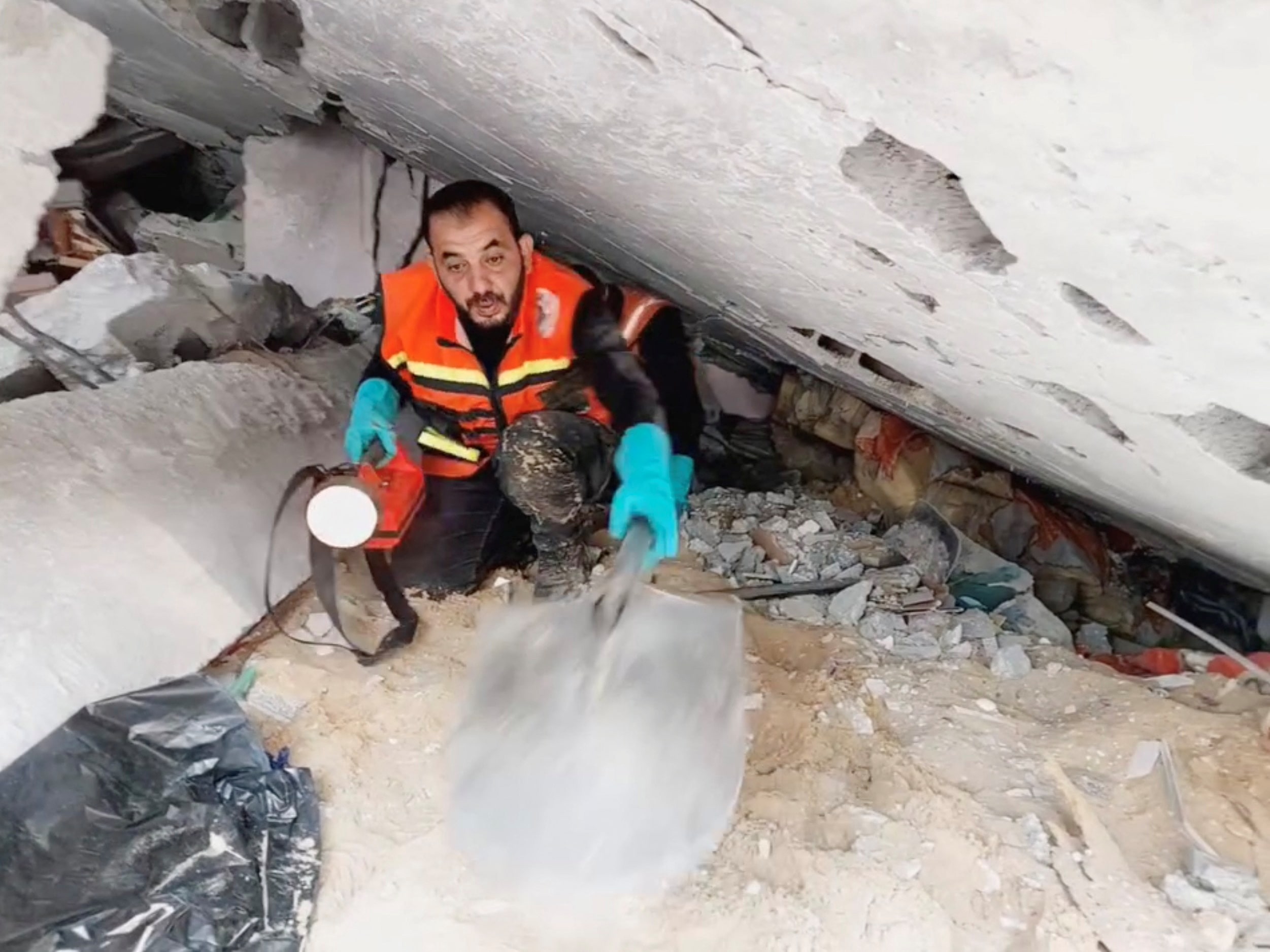 A screen grab taken from a video posted on social media by the Palestinian Civil Defence on Dec. 5, 2023, shows what they say are members of the Palestinian Civil Defence rescue team working in a collapsed building in a location given as Gaza. (Credit: Palestinian Civil Defence/Handout via Reuter)
A screen grab taken from a video posted on social media by the Palestinian Civil Defence on Dec. 5, 2023, shows what they say are members of the Palestinian Civil Defence rescue team working in a collapsed building in a location given as Gaza. (Credit: Palestinian Civil Defence/Handout via Reuter)
Death in the Lebanese Armed Forces
In Lebanon, a casualty not yet seen during the conflict: a soldier belonging to the Lebanese Army was killed by an Israeli air strike. The soldier was stationed at a Lebanese Army site on the hills of al-Owaidah, in the southern village of Taybeh, Marjeyoun district, when it was targeted. Initially the soldier was one of four wounded and taken to a nearby hospital, but later succumbed to their wounds. The Lebanese Army, while present in southern Lebanon, has not been involved in the conflict there.
